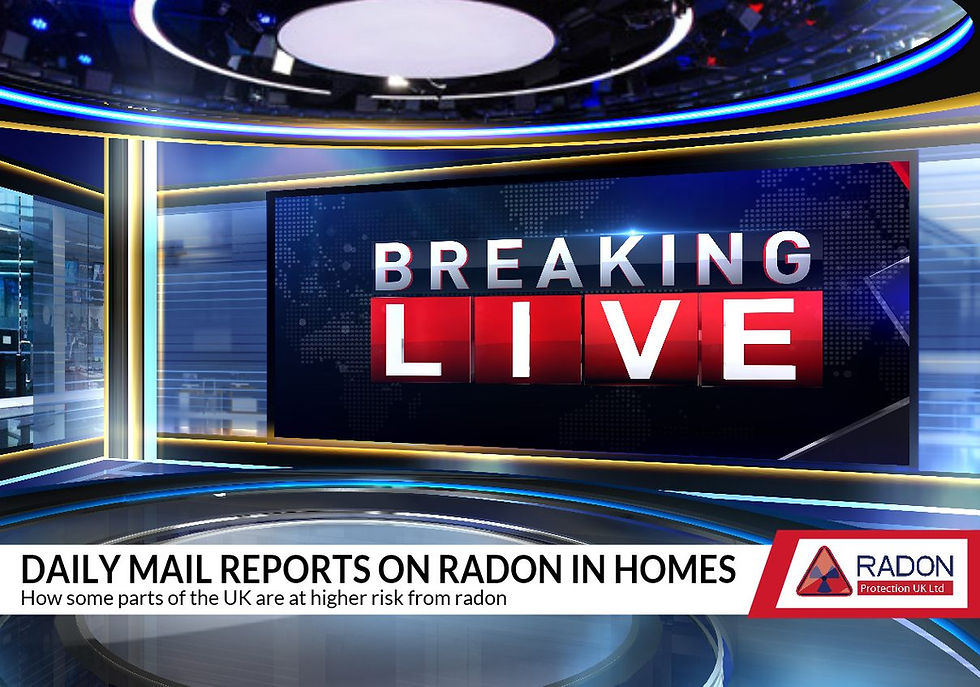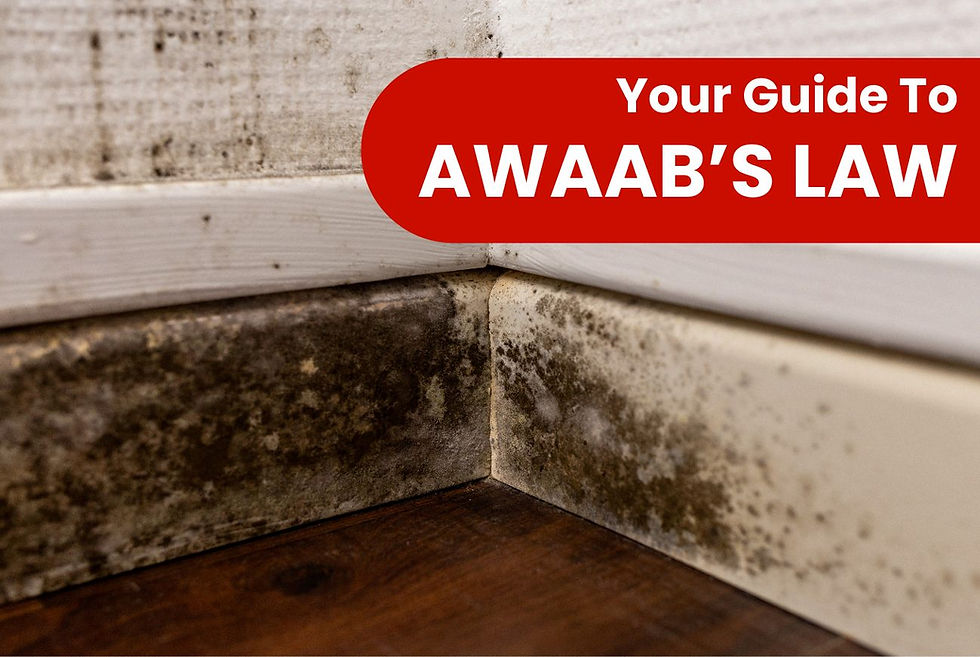Are Radon Sumps effective and how much do they cost?
- sarah11342
- Aug 13, 2024
- 4 min read
We are often asked this question... What does a radon sump cost and how does it work?
There are several ways of reducing indoor radon levels however, one of the most commonly used in the UK is a radon sump. This is a technique in which a small void is created underground beneath the property.
This void serves as the lowest pressure point in the ground and collects radon gas from the soil, rather than the gas being drawn into the property which ordinarily represents the lowest point of pressure.
Our Radon Engineer will fit and install the pipework and an inline fan, normally installed on an outside wall of the building, This exhausts the radon continuously from the sump and discharge it safely into the atmosphere, well away from the building.
Radon is a radioactive gas that occurs naturally and is produced due to the decay of uranium in the ground. It is hazardous and long term exposure can lead to including lung cancer.
All buildings contain some radon, however, without conducting a specific test it is impossible to know whether any given property contains high levels.
UK Health Security Agency (formerly PHE) advises that the risk depends on where you live as some areas are more prone than others due to the underlying geology. In addition, all properties with basements or cellars are considered to be at higher risk than those without.
How Do I Know If My Home Has Radon?
As mentioned earlier, every home in the UK contains some radon. It is a gas that escapes from the ground and is drawn into your home through the floor. There is also low levels of radon in the air outside, however, this is diluted to a very low concentration once it leaves the ground.
You can measure the levels of radon in your home by buying a kit from Radon Protection <<shop store>>. Check out this page for more details on how to test for radon and interpret test results.
You can also call us on 0800 978 8435 for details on radon testing and radon mitigation.
How Can I Reduce Radon Levels?
Temporary solutions, such as opening windows to allow better ventilation may have some short-term benefit, however in the long-term this is not practical and is usually not sufficient to reduce radon levels significantly.
To effectively reduce radon levels, the pressure difference between the ground and the air within the property needs to be addressed. This is most often achieved either via the installation of a positive input ventilation system or a retrofit radon sump.
What Is a safe Level of Radon Gas?
At low levels, radon does not pose a threat. The average level inside UK homes is estimated to be 20 Becquerels per cubic metre (20 Bq/m3), with background levels outside around 4 Bq/m3.
The UK government has set an action level of 200 Bq/³ and a target level of 100 Bq/m³. All homeowners with annual average concentrations about 200 Bq/m3 should take action to reduce the concentration. Those with levels between 100 and 200 Bq/m3 should “strongly consider” taking action, particularly if they are in higher risk groups such as smokers and ex-smokers. The aim for any mitigation work is to reduce levels to beneath 100 Bq/m3, hence this being labelled the target level.
How Effective Are Radon Sumps?
Radon sumps are extremely effective means of reducing indoor radon concentrations. Their performance relies upon the sump creating the lowest point of pressure beneath the building and being located in the best place to serve the entire footprint however, so it is vital that a thorough survey is conducted prior to installation.
How Is The Radon Sump Installed?
After Radon Protection UK have carried out a survey of your home or workplace, we have a team of expert engineers who complete the installation from start to finish, including electrical works.
The vast majority of retrofit sumps are installed from outside the building by drilling through an external wall into the fill beneath the foundations, therefore there is no disruption to floors or decoration inside.
Works are typically completed in one or two days.
Are Radon Sumps Only For Homes?
No. Radon sumps can be used to reduce radon levels in all kinds of buildings including homes, offices and warehouses. The procedure is similar in all cases, however in large commercial buildings it may be necessary to install sumps internally via excavating small sections of the ground floor.
How Much Does It Cost?
All of our radon sump systems are individually designed according to the property and existing radon levels. The cost of a radon sump installation varies according to the size, layout and history of the property, construction materials, existing electrical connections, whether there are any specific aesthetic considerations (for example if the building is Listed) as well as the equipment needed.
The typical range for mitigating a residential property using radon sumps is £1550 – £3000 however this is just a ballpark reference range and we would encourage you to contact us to arrange a survey so a precise quotation can be provided.
Call Radon Protection UK 0800 978 8435. or book a radon survey.






Comments